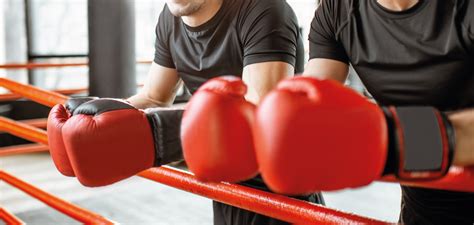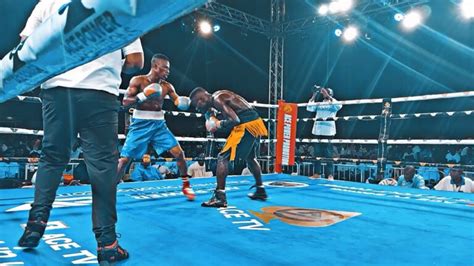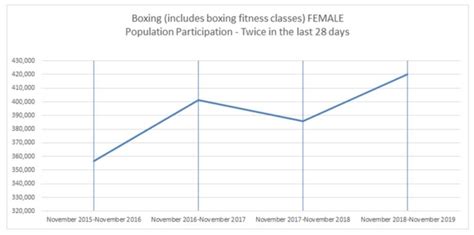Explore the essential safety protocols in professional boxing, their impact on fighters, training practices, and their significance in championship events.In the high-octane world of professional boxing, where every punch can alter the course of a fighter’s career, understanding safety protocols is paramount. These guidelines are designed not only to protect fighters during training and competition but also to enhance the integrity of the sport itself. From preventing injuries to promoting fair play, mastering these protocols ensures that athletes can perform at their best while safeguarding their health. In this article, we will delve into the essential elements that form the backbone of safety in boxing, explore how these protocols protect fighters in the ring, and examine their impact on boxing championships. Whether you’re a seasoned boxer, an aspiring athlete, or a passionate fan, gaining insight into these critical safety measures will deepen your appreciation for the sport and its commitment to fighter welfare.
The Importance of Understanding The Safety Protocols
In professional boxing, the importance of Understanding The safety protocols cannot be overstated. These protocols are designed to safeguard the well-being of fighters, ensuring that they can compete in a manner that minimizes the risk of serious injury. A deep comprehension of these protocols is essential for all parties involved, including fighters, trainers, and officials.
One key reason why it is crucial to understand the safety protocols is that they create a standardized framework for safe competition. This framework includes medical examinations, pre-fight assessments, and post-fight evaluations that help identify potential health issues before they escalate in the ring. Additionally, these protocols facilitate informed decision-making during bouts, as they dictate when a fight should be stopped to protect a fighter from harm.
Furthermore, understanding the safety protocols fosters a culture of respect and responsibility. By adhering to these guidelines, all participants contribute to a safer environment that prioritizes the health and safety of everyone involved. This culture enhances the integrity of the sport and builds trust among fans, athletes, and regulatory bodies.
The continuous evolution of safety protocols reflects advancements in sports medicine and research. Staying informed about the latest changes and recommendations is vital for all boxing stakeholders to adapt to new findings, ensuring that they are implementing the most effective safety measures. In summary, prior knowledge and understanding the safety protocols are vital for preserving the spirit and safety of the sport.
Key Elements of Safety Protocols in Professional Boxing
In the world of professional boxing, Understanding The safety protocols is crucial for safeguarding the health and wellbeing of fighters. Several key elements come together to form a robust safety framework that governs the sport. Here are the most significant components:
- Medical Examinations: Prior to a fight, boxers must undergo comprehensive medical evaluations, including neurological tests and physical examinations, to ensure they are fit to compete. This step is vital in identifying any pre-existing medical conditions that could jeopardize a fighter’s safety in the ring.
- Weigh-Ins: Official weigh-ins are conducted to ensure that fighters compete within their designated weight classes. This prevents mismatches that could lead to dangerous situations due to size and weight differentials.
- Referee Training: Referees play a crucial role in maintaining safety during a bout. They are trained to identify signs of injury or distress in boxers and are empowered to stop the fight at any moment to protect the fighters.
- Protective Gear: Fighters are required to wear specific protective gear, including gloves, mouthguards, and headgear (in some amateur competitions), which are designed to minimize injuries during combat.
- Emergency Medical Personnel: Having trained medical staff on-site during fights is essential. Immediate response capabilities ensure that any injuries sustained can be attended to promptly, reducing the severity of potential damages.
- Post-Fight Evaluations: After every bout, boxers undergo post-fight examinations to assess their health and recovery. This includes assessments for concussions or other injuries that may have occurred during the match.
By understanding these key elements of safety protocols in professional boxing, athletes and officials alike can contribute to a safer environment in the ring, ultimately promoting the longevity and well-being of the sport.
How Safety Protocols Protect Fighters in the Ring
Understanding the safety protocols is crucial for ensuring the well-being of fighters during matches. These protocols are designed to minimize the risk of injury and provide a structured approach to handling any emergencies that may arise in the heat of competition.
One of the key components of the safety protocols is the requirement for medical examinations before fights. Fighters must undergo comprehensive health assessments to ensure they are fit for competition. This includes evaluations for any pre-existing conditions that could be exacerbated by the rigors of boxing.
During the fight itself, the presence of ringside medical personnel is paramount. They are trained to respond promptly to injuries and assess a fighter’s condition in real time. If a boxer exhibits signs of distress, such as inability to defend themselves or excessive damage, the medical team has the authority to stop the fight, thereby protecting the fighter from further harm.
Additionally, understanding the official rules that govern the sport is vital. These rules often include time limits, tie-breaking criteria, and the process for stopping the fight. Adherence to these regulations ensures a fair playing field and minimizes unnecessary risks for all fighters involved.
Moreover, the use of protective gear, such as headgear and gloves, is essential in mitigating injuries. Safety protocols require that these elements are not only of proper size but also meet specific standards to absorb impact effectively, thereby reducing the likelihood of concussions and other serious injuries.
The comprehensive safety protocols in boxing play a critical role in protecting fighters in the ring. By focusing on health assessments, medical preparedness, official rules compliance, and appropriate protective gear, these measures ensure a safer competitive environment, allowing athletes to focus on their performance while minimizing risks.
Training and Awareness: Understanding The Protocols
In the world of professional boxing, Understanding The safety protocols is essential for the well-being of the fighters. Training programs play a pivotal role in enhancing awareness among boxers and their corners about these crucial safety measures. It is not just about knowing the protocols but also about implementing them effectively throughout the training and competitive phases.
To ensure a fighter’s safety, trainers must integrate safety protocols into every aspect of training. This means conducting thorough pre-fight medical examinations, consistent assessments, and conditioning sessions focused on minimizing injury risks. Regular education on the latest developments in rules and safety standards must also be mandatory.
Moreover, awareness extends beyond the fighters to the entire fight team, including coaches, cutmen, and medical staff. Workshops and seminars that emphasize the significance of Understanding The protocols can greatly enhance their knowledge and preparedness. Safety drills that include simulated injuries and protocol responses are effective ways to practice immediate responses in real situations.
Fostering an environment where questions and clarifications about safety protocols can be freely discussed can lead to a more knowledgeable team. Continuous learning and adaptation are key to maintaining high safety standards, ensuring that all individuals involved in the sport prioritize the health and safety of the fighters above all else.
The Impact of Safety Protocols on Boxing Championships
Understanding the safety protocols is not only crucial for the well-being of the fighters but also plays a significant role in the reputation and integrity of boxing championships. These protocols create a structured environment that ensures the safety of all participants while preserving the sport’s competitive nature.
When promotions and organizations enforce strict safety regulations, they demonstrate a commitment to protecting their athletes. This builds trust within the boxing community, attracting both fighters and fans. Championship events that prioritize safety protocols often experience better attendance and viewership as audiences feel more secure witnessing the sport.
Moreover, imposition of safety measures can lead to fewer serious injuries, which fosters a more positive perception of the sport. High-profile incidents can tarnish the image of boxing; thus, effective safety protocols help mitigate risks and prevent negative publicity that could affect future events.
In addition, these protocols can influence matchmaking and event planning. Promotions might choose to match fighters with appropriate skill levels and experience, carefully assessing medical records and pre-fight health evaluations. This ensures that all bouts are not only thrilling but also safe for participants, reinforcing the idea that understanding the safety protocols is integral to the sport’s advancement.
The implementation of robust safety protocols can have lasting impacts on championships, enhancing fighter confidence, audience enjoyment, and the overall viability of boxing as a professional sport.
Frequently Asked Questions
What are the primary safety protocols in professional boxing?
The primary safety protocols in professional boxing include mandatory medical examinations, the use of protective gear such as gloves and mouthguards, strict weight classes to ensure fair competition, and the presence of ringside physicians to monitor fighters’ health.
How do referees contribute to safety in boxing matches?
Referees play a crucial role in safety by enforcing rules, stopping the fight if a boxer is unable to defend themselves, and ensuring that both fighters follow the safety protocols throughout the match.
What types of medical exams must boxers undergo before a fight?
Boxers must undergo comprehensive medical exams that typically include neurological assessments, cardiovascular tests, and eye examinations to ensure they are fit to compete and to detect any underlying health issues.
Are there regulations regarding the size and weight of boxing gloves?
Yes, there are regulations regarding the size and weight of boxing gloves, which vary by weight class and sanctioning body. Gloves must be appropriately padded to protect both fighters during a match.
What is the role of a ringside physician during a boxing match?
A ringside physician is responsible for assessing the health and safety of the fighters during the match, evaluating any injuries, and making the decision to stop a fight if a boxer is deemed unable to continue safely.
How does weight class ensure fighter safety?
Weight classes help ensure fighter safety by matching competitors of similar size and weight, reducing the risk of severe injuries that can occur when a significantly heavier fighter competes against a lighter one.
What are the consequences of not following safety protocols in boxing?
Failure to follow safety protocols in boxing can result in severe injuries, potential legal actions against promoters and venues, and the possibility of a fighter being suspended or banned from competing.









